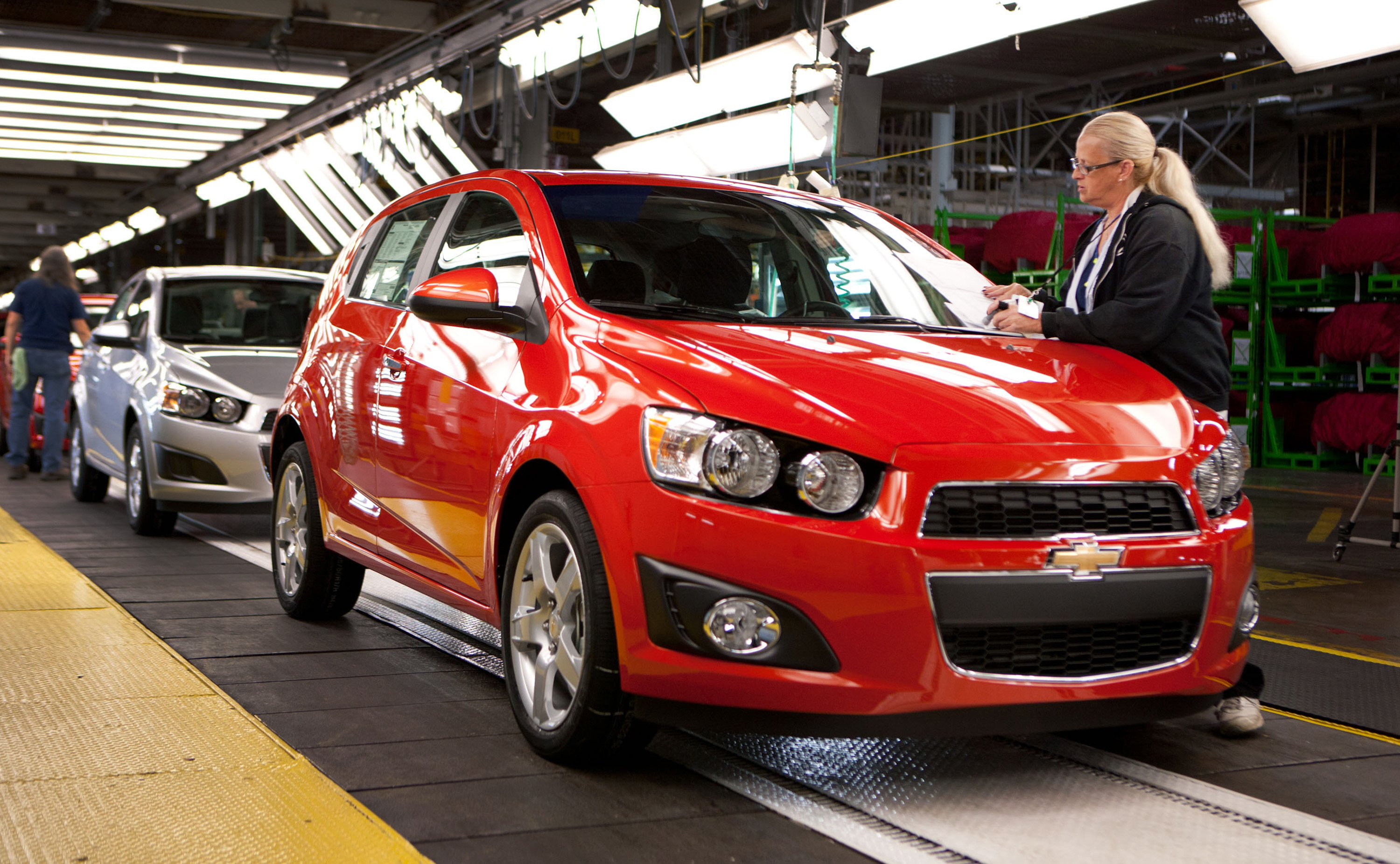The Crank: Could Detroit be doing better?
By John LeBlanc
Compared to just three years ago, the trio of Detroit, U.S.A. automakers are feeling pretty good these days. It was only in 2009 where both Chrysler and General Motors filed for bankruptcy, needing tax payer “bailout” money to get by. All you hear these days from Detroit, though, are record sales and profits. But there are always two sides to a story. Scott Burgess recently wrote a piece for CNN suggesting Chrysler, Ford, and GM aren’t quite out of the woods yet. In fact, he cites eight reasons why the trio may be on the way to another crisis like 2009:
Number One: Domestics cars depreciate faster than imports
The CNN story says, “retained value is a reliable indicator of vehicle quality and resale value, and it helps determine monthly lease payments. An analysis by Edmunds.com of models that hold their values best identifies 38 from Japan but only 21 from Detroit.” What else can I say?…
Number Two: Old ways aren’t the best ways
… and the domestic cars that do hold their value best, like heavy-duty pickups and muscle cars, have virtually no import competition.
Number Three: Detroit lags in fast-growing crossover segments
Small crossovers, pioneered the Japanese, are super-hot right now. But the CNN piece suggests Detroit is lagging behind, saying crossovers will still account for only 22 per cent of GM’s new model sales volume by 2015—well below the industry’s 30 per cent benchmark.
Number Four: Big ticket customers go elsewhere
When it comes to luxury buyers, the domestic Cadillac, Chrysler, and Lincoln brands have been falling behind for decades. While Japan’s Acura, Infiniti, and Lexus, and Germany’s Audi, BMW, and Mercedes-Benz continue launching all-new luxury vehicles, seemingly every week, the U.S. brands can’t offer the same variety or brand status.
Number Five: The Detroit Three still have too many dealers
The more cars each dealer sells the more profitable it will be. Plus it saves the automaker money supporting less stores. Simple stuff. But the sales per dealer stats by Automotive News sees nine import brands leading the way, with Ford as the highest ranked domestic, in tenth.
Number Six: Detroit Three dealers stock too many vehicles
According to stats in the U.S., the average Detroit Three dealer was carrying 68 days supply on May 1, while European and Japanese brands were at 49 days.
Number Seven: Good enough isn’t good enough
While Ford and GM are introducing more new models than ever before, even at a higher rate than the Asians, it may not be enough. Analysts say that despite these efforts, the Detroit Three will only stabilize their historically low market share.
Number Eight: What price parity?
Back to those market share numbers: Reports say that by 2015, the Detroit Three will be holding on to only 45.8 per cent of the U.S. new car market. The so-called Asian Four of Toyota, Nissan, Honda, and Hyundai/Kia will have 41 per cent. Gone are the days when Detroit had almost 100 per cent of the new car market. Burgess cites when big, American companies like Kodak, Sears, and A&P lost their dominating market shares, they rapidly fell into irrelevance. Are the Detroit Three heading for a simialr fate?
So, over to you, dear readers. Could the Detroit Three be doing better? Or are their efforts all for naught?
Source: CNN






![[del.icio.us]](https://www.straight-six.com/wp-content/plugins/bookmarkify/delicious.png)
![[Digg]](https://www.straight-six.com/wp-content/plugins/bookmarkify/digg.png)
![[Facebook]](https://www.straight-six.com/wp-content/plugins/bookmarkify/facebook.png)
![[Google]](https://www.straight-six.com/wp-content/plugins/bookmarkify/google.png)
![[Reddit]](https://www.straight-six.com/wp-content/plugins/bookmarkify/reddit.png)
![[StumbleUpon]](https://www.straight-six.com/wp-content/plugins/bookmarkify/stumbleupon.png)
![[Twitter]](https://www.straight-six.com/wp-content/plugins/bookmarkify/twitter.png)
![[Email]](https://www.straight-six.com/wp-content/plugins/bookmarkify/email.png)